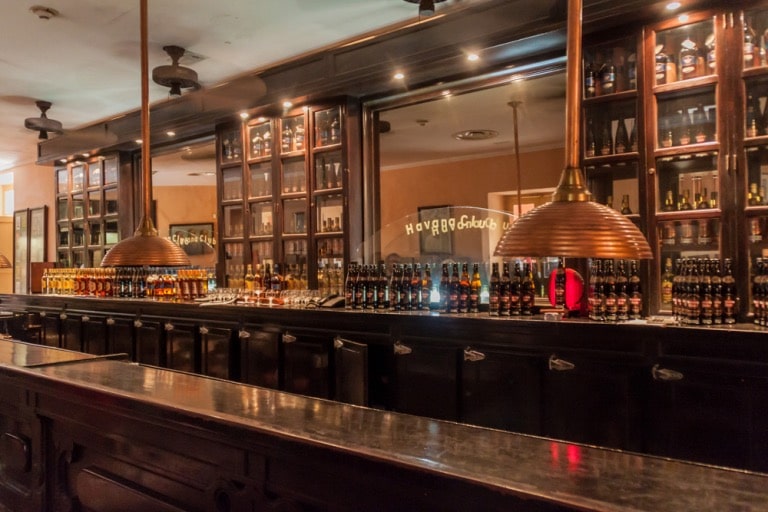Creating a Cool Space: Turning a Vintage Building Into a Taproom

Transforming a vintage building into a trendy taproom can breathe new life into an old structure, offering the perfect blend of nostalgia and modern convenience. Vintage buildings naturally carry an air of authenticity and history that modern construction can rarely replicate.
By integrating the past with contemporary comforts and style, entrepreneurs can create an inviting atmosphere that stands out in a crowded marketplace. If you’re considering such an endeavor, preparing for the challenges and understanding the potential is essential. Below, we’ll explore the excitement and intricacies of converting a vintage building into a vibrant taproom.
The Charm of Vintage Buildings for Taproom Transformation
Vintage buildings bring a special charm to taproom projects, offering rich history and standout architectural details like exposed brick and wooden beams. These unique elements create an authentic, welcoming atmosphere where guests can enjoy craft brews in a setting full of character. Installing a long-draw beer system in such a space enhances the experience, blending tradition with modern functionality.
Turning these older spaces into taprooms requires care and expertise. Renovators often rely on wood refinishers services to restore original features while preserving the building’s integrity. This sustainable approach supports adaptive reuse and transforms the taproom into a cherished local landmark that honors community heritage.
Essential Design Elements for a Vintage Taproom Aesthetic
To create a vintage taproom, select design elements that reflect the building’s period, such as reclaimed wood, antique lighting fixtures, and vintage bar stools. Collaborate with interior designers to ensure the design resonates with the era. Lighting should enhance the building’s original features while providing warm, welcoming illumination.
Use period-appropriate sconces, chandeliers, or pendant lighting to set the mood. The bar and back bar design should complement the building’s vintage charm, using traditional materials like copper, brass, or mahogany. Consider thoughtful color schemes that echo the building’s period without overwhelming modern sensibilities, highlighting key features and creating a cohesive look.
Navigating Regulatory Compliance in Historical Renovations
Renovating historic buildings requires navigating regulations to preserve their cultural significance. Compliance with local, state, and federal preservation laws is crucial to avoid legal complications.
Understanding the limitations on alterations to the building’s facade, structural changes, and interior modifications is essential. Working with agencies like the local historic preservation office can provide guidance and resources, offering incentives like grants or tax breaks.
Collaboration and open communication with regulatory bodies are key to a successful transformation. Environmental regulations, particularly concerning hazardous materials like asbestos or lead paint, require professional remediation services for safety and compliance. Accessibility requirements are also crucial, as public spaces must be accommodating to all patrons. Professional architects and contractors can provide innovative solutions to these challenges.
Innovative Ways to Reuse Original Features in a Modern Taproom
Incorporating vintage building’s original features into modern taprooms not only preserves the building’s character but also serves as a unique selling point. Restoring and repurposing woodwork, tiles, and industrial windows can create a warm and historical atmosphere.
Incorporating vintage signage, murals, and even mundane elements like radiators, pipe work, or exposed brick can reinforce the space’s authenticity and industrial chic. For those unpreserved features, creative repurposing can be key, such as turning damaged wood into tabletops or art installations. By thoughtful curation and design, each piece of the past can contribute to a memorable taproom experience.
Marketing Your Vintage Taproom to Create a Buzz in the Community
To market a vintage taproom, focus on its unique selling points: history, architecture, and a unique atmosphere. Share the story of the building’s history and its journey to becoming a taproom through social media, press, and community events. Partner with local historians, preservation societies, and cultural initiatives to add legitimacy and depth to the brand.
Offer tours or historical tidbits alongside the menu to enrich the customer experience. Create specialty brews or menu items that reflect the building’s era, collaborating with local brewers to create historically inspired drinks. Use visual storytelling through photography and videography to showcase the venue’s historic elements and invite customers to become part of the building’s ongoing story.
Overall, transforming a vintage building into a successful taproom involves more than just serving beer; it involves offering a unique experience that evokes a sense of place and time. This requires patience, passion, and meticulous attention to detail.
The reward is a taproom that embodies the essence of its past while introducing modern comforts. When done right, it becomes an integral part of the community’s fabric. With careful design, compliance, and marketing, a vintage taproom can thrive and become a cherished destination for patrons.





